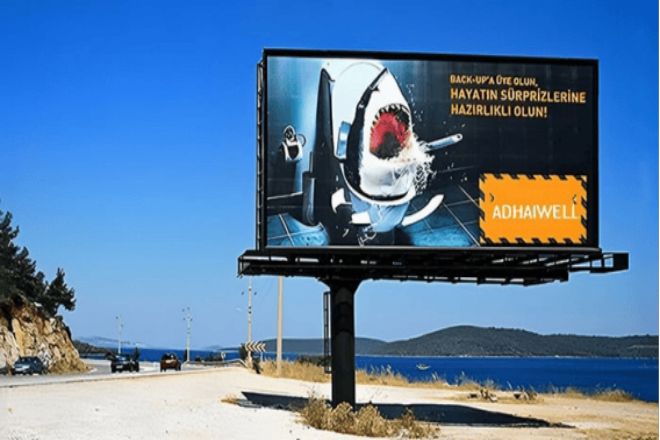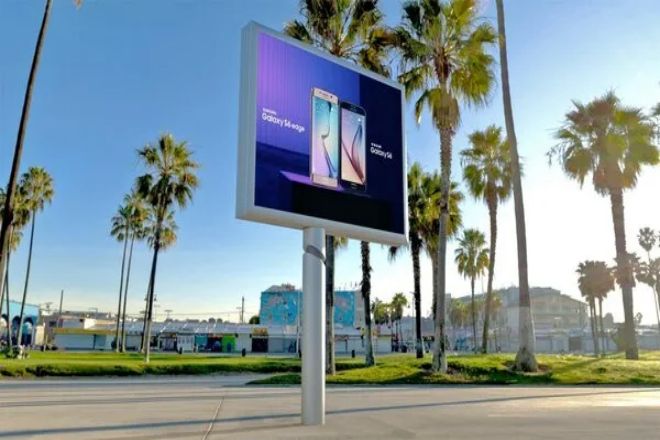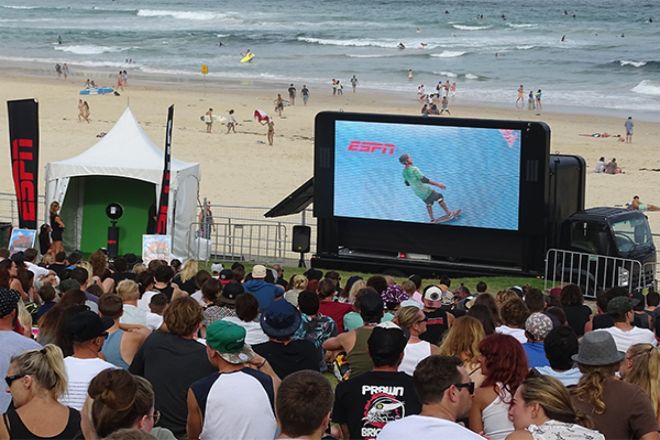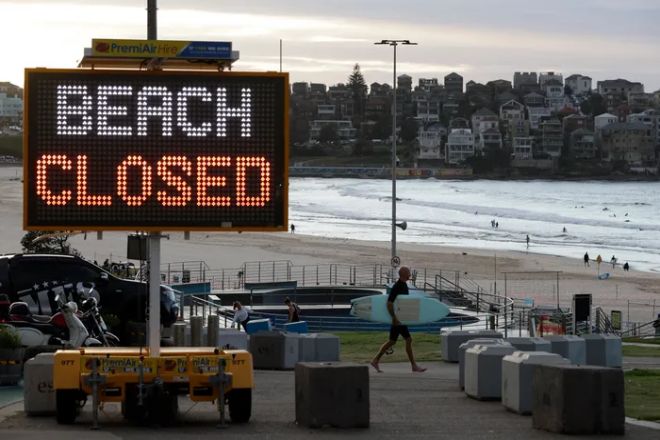Introducción

On the vast seashore, pantallas de visualización LED, as an efficient and intuitive information dissemination medium, are gradually becoming standard equipment in public places such as seaside scenic spots, docks, and leisure areas.
However, unlike urban or other inland environments, the seaside environment puts forward more stringent requirements for the material selection, design, and installation of LED displays. High humidity, strong wind, salt spray corrosion, and strong sunlight are all challenges that seaside LED displays must face.
Therefore, choosing a suitable LED display in such an environment to ensure its stable operation and long-term durability has become an important issue facing every purchaser and installer. This article will delve into the key points of selecting seaside LED displays. Let’s take a look.
1. What are the key factors to consider when choosing an LED display suitable for a seaside environment?
When choosing an LED display suitable for a seaside environment, you need to consider the following key factors:
1). Environmental adaptability
- Moisture-proof and waterproof performance:
The seaside environment has high humidity, especially during the rainy and foggy seasons, and the display screen is often exposed to humid air and moisture. Therefore, it is crucial that the display is moisture-proof and waterproof.
It must have excellent sealing performance to ensure that the internal circuit boards and components are not affected by the humid environment, thereby preventing problems such as short circuits and corrosion.
At the same time, the display case should be made of waterproof material and designed with waterproof interfaces and drainage holes to prevent moisture from penetrating inside.
- Resistance to salt spray corrosion:
The salt spray environment at the seaside is particularly corrosive to metal components and circuit boards. The salt in salt spray can adhere to the casing and internal structure of the display, causing metal parts to rust and circuit boards to corrode.
Therefore, the casing of the display screen should be made of corrosion-resistant materials, such as stainless steel, aluminum alloy, or special coatings, to enhance its ability to resist salt spray corrosion.
At the same time, the circuit board of the display screen should also use anti-corrosion materials and coatings to extend its service life.
- Wind resistance:
The wind is strong at the seaside, especially in typhoons and stormy weather, and the display needs to withstand strong wind impact. Therefore, the structural design of the display screen should be stable, reliable, and able to withstand strong winds.
It should use materials with strong wind resistance, such as high-strength steel or aluminum alloy, and adopt reasonable support and fixation methods to ensure that the display can remain stable in bad weather.
2). Durability and reliability
- Material selection:
The display screen should be made of high-quality, durable materials to ensure that it can operate stably in a seaside environment for a long time. The casing should be made of strong and durable metal or alloy materials that can resist external impact and corrosion.
At the same time, the internal components of the display screen should also be made of high-quality parts to improve overall durability.
- Heat dissipation performance:
The seaside environment has high humidity, which makes it difficult to dissipate heat. The display easily generates heat during operation. Therefore, the display needs to have a good heat dissipation design to ensure that the internal components will not be damaged by overheating during long-term operation.
Efficient heat sinks, fans, and other cooling equipment, as well as reasonable heat dissipation layout and ventilation design, can be used to improve the display’s heat dissipation performance.
- Maintenance convenience:
In a seaside environment, the display screen may be corroded by pollutants such as sand and salt, so it requires regular cleaning and maintenance. Choosing a display that is easy to clean and maintain can reduce the difficulty and cost of maintenance.
For example, the casing of the display screen should be designed with a structure that is easy to disassemble and clean so that cleaning personnel can easily perform cleaning work.
3). Safety
- Lightning protection design:
Thunder and lightning activities are frequent at the seaside, and the display screen must have an effective lightning protection design to prevent lightning from damaging the equipment.
Lightning protection equipment such as lightning rods and arresters can be used to ensure that the display screen can operate safely during lightning weather.
- Fire performance:
The display should be made of flame-retardant materials to reduce the risk of fire. At the same time, the circuit design of the display screen should also comply with relevant fire protection standards to avoid fires caused by circuit failures.
2. What effect does exposure to salt water and salty air have on LED displays?

The impact of salt water and salty air on LED displays is manifold.
En primer lugar, the salt in salt water and salty air will cause corrosion to the display case, solder joints, circuit boards, and other components, leading to circuit short circuits, case deformation, and other problems.
This corrosive effect can exacerbate damage to metal components and may even trigger the formation of galvanic cells, especially when dissimilar metals come into contact.
Además, the salt in the salt spray environment will also affect the optical performance of the display screen, resulting in reduced brightness and color distortion, thereby affecting the audience’s visual experience.
Segundo, salty air can form a film on the surface of non-metallic components, causing the insulating and dielectric properties of these materials to degrade, creating leakage paths.
When the insulating material absorbs moisture, its volume conductivity and dissipation coefficient may increase, further affecting the performance and stability of the display.
Además, salt spray and humid environments will increase the failure rate of the display and shorten its service life. In such an environment, the heat dissipation performance of the display may also be affected because a humid environment is not conducive to heat dissipation.
In order to reduce these effects, you can choose to use an LED display with moisture-proof and anti-corrosion functions. During installation and maintenance, ensure that the display’s casing and internal components are well sealed to prevent the intrusion of salt water and salt spray.
Al mismo tiempo, it is also very important to clean and maintain the display screen regularly to remove accumulated salt and dirt and maintain it in good working condition.
3. What is the best corrosion-resistant material for seaside LED displays?
The best material selection for corrosion resistance of seaside LED displays is a decision-making process that requires careful consideration of many factors. Here is a detailed analysis of the various potential materials:
- Stainless steel:
Stainless steel is particularly popular in seaside environments due to its excellent corrosion resistance. Among them, 304 and 316 stainless steel are the two most common choices.
They are resistant to corrosion from salt water and salty air, maintaining a stable appearance and performance over time. Stainless steel also has high mechanical strength and can withstand the impact of natural forces such as sea wind and waves.
However, the cost of stainless steel is relatively high, and processing and installation may also require more time and resources.
Additionally, stainless steel can also develop corrosion problems under certain conditions, so proper surface preparation and maintenance are critical to maintaining its corrosion-resistant properties.
- Aluminum alloy:
Aluminum alloy is another common corrosion-resistant material. It is lightweight and strong, suitable for use in frames and support structures for large LED displays. Aluminum alloy surfaces often undergo special treatments, such as anodizing or spraying anti-corrosion coatings, to further improve their corrosion resistance.
The cost of aluminum alloy is relatively low, and processing and installation are relatively simple. However, it may not have the same excellent corrosion resistance as stainless steel, especially in extremely harsh seaside environments.
Therefore, when selecting an aluminum alloy, you need to ensure that it has been properly surface treated and take into account its long-term corrosion resistance.
- Polymer Materials:
Some polymer materials, such as polycarbonate (PC) and polyvinyl chloride (PVC), also have good corrosion resistance. These materials can be used in display panels, casings, and other components to provide an extra layer of protection. They often have excellent weather and UV resistance, maintaining color and performance stability over time.
The cost of polymer materials is relatively low, and the processing performance is good. However, they may not be as mechanically strong as metallic materials, so this needs to be taken into account when designing.
In addition, some polymer materials may be sensitive to specific chemicals, so the specific conditions of the environment in which they are used need to be taken into consideration when selecting.
- Special alloys and coatings:
In addition to the common materials mentioned above, there are also some special alloys and coating technologies that can be used to enhance the corrosion resistance of LED displays. For example, special alloys such as titanium alloys and nickel-based alloys have extremely high corrosion resistance, but their costs are also relatively high.
In addition, spraying or electroplating corrosion-resistant coating is also an effective anti-corrosion measure, which can form a protective film on the metal surface to prevent the erosion of salt water and salty air.
When selecting these specialty alloys and coatings, their cost, processability, and long-term corrosion resistance need to be considered.
At the same time, it is also necessary to ensure that these materials or coatings are compatible with other parts of the LED display and will not affect its overall performance and appearance.
4. Are there specific certifications or ratings for LED displays suitable for beachside use?

LED displays suitable for seaside use may indeed have specific certifications or ratings, which are usually designed to prove the product’s durability and reliability in harsh environments such as salt spray, moisture, heat, and humidity. Here are some certifications and ratings related to seaside environments:
- IP (Ingress Protection) level:
The IP level is an international standard used to describe the protection level of electronic equipment enclosures. It consists of two numbers, the first number representing the dustproof level and the second number representing the waterproof level. For LED displays for seaside use, a higher IP rating (such as IP65 or higher) usually means better waterproof and dustproof performance and can resist the erosion of salt water and humid air.
- UL (Underwriters Laboratories) certification:
UL is an independent safety science company that provides a wide range of product safety certification services. UL certification can prove that a product meets specific safety standards, including electrical safety and fire performance in harsh environments. LED displays used at the seaside may require UL certification or other similar electrical safety certifications.
- Salt spray test certification:
Some LED display manufacturers will conduct salt spray tests to simulate the corrosion effects of the seaside environment. Products that pass salt spray testing usually receive relevant certifications or reports proving their stability and corrosion resistance in salt spray environments.
- Anti-UV (Ultraviolet) Certification:
The seaside environment is often accompanied by strong sunlight and ultraviolet radiation. Therefore, LED displays may also need to have anti-UV certification to ensure that their casing, display, and internal components will not be damaged or faded due to prolonged UV exposure.
High temperature and high humidity test certification: The seaside environment is often accompanied by high temperature and high humidity, which poses challenges to the stability and reliability of LED displays.
Some products may undergo high temperature and humidity testing and obtain relevant certifications or reports.
It should be noted that different countries and regions may have different certification standards and requirements.
Therefore, when choosing an LED display suitable for seaside use, it is recommended to communicate with the supplier or manufacturer to understand whether their products have relevant certifications and ratings and to confirm whether these certifications comply with the regulations and standards of the target market.
5. Can LED displays be customized for seaside installations to increase durability and longevity?
LED displays can indeed be customized for seaside installations to increase their durability and longevity.
Taking into account the particularity of the seaside environment, such as salt spray, humidity, ultraviolet rays, and other factors, the customized LED display will be specially optimized in terms of design, materials, protective measures, etc.
En primer lugar, in terms of material selection, customized LED displays will use materials with excellent corrosion resistance and waterproof and dustproof properties, such as stainless steel, special alloys, or polymer materials. These materials are resistant to salt water, humid air, and UV rays, extending the life of the display.
En segundo lugar, in terms of structure, customized LED displays will take into account the special needs of the seaside environment, such as stronger structural support, more reasonable heat dissipation design, etc.
This ensures that the display screen operates stably in a seaside environment and reduces failures caused by environmental factors.
Además, according to the characteristics of the seaside environment, customized LED displays can also add some special protective measures, such as waterproof coating, sealing design, etc.
These measures can effectively prevent salt water and humid air from entering the interior of the display and protect its internal circuits and components from damage.
During the customization process, the resolution, brightness, contrast, and other parameters of the display can also be adjusted according to actual needs to adapt to the light conditions and viewing needs of the seaside environment.
6. What maintenance is required for LED displays installed at the beach?

LED displays installed at the seaside require a series of maintenance measures to ensure stable operation and extend their service life due to their special environmental conditions. Here are some key maintenance steps and considerations:
- Resistente al agua y a la humedad:
The seaside environment has high humidity and is often invaded by rain and seawater. Therefore, the display case and internal circuit must be waterproof and moisture-proof. During installation, you should ensure that the waterproof level of the display meets or exceeds the requirements of the seaside environment and install a waterproof cover or waterproof eaves around the display to prevent rainwater from directly getting on the display.
In addition, regularly check whether the waterproof facilities are in good condition and repair them in time if there is any damage.
- Dust prevention and cleaning:
Sand, dust, and salt in the seaside environment easily adhere to the surface and interior of the display, affecting its display effect and service life. Therefore, the display needs to be cleaned regularly, using a soft cloth and a special cleaning agent, and chemical solvents or water should not be used for direct cleaning.
At the same time, a dust cover or protective net should be set up around the display screen to reduce the entry of sand, dust, and salt.
- Lightning protection and grounding:
The seaside environment is easily affected by lightning, so the display must take lightning protection measures. During installation, you should ensure that the grounding system of the display screen is complete and the grounding resistance meets the standards to avoid damage to the display screen caused by lightning.
At the same time, during thunderstorms, the power of the display screen should be turned off in time to reduce the potential threat of lightning to the equipment.
- Heat dissipation and ventilation:
The seaside environment usually has high temperatures and high humidity, which will affect the heat dissipation effect of the display. Therefore, it is necessary to ensure that the display’s cooling system is functioning properly and that the vents are not blocked. During installation, the layout and spacing of the display should be reasonably designed to improve heat dissipation efficiency.
At the same time, regularly check whether the cooling fan, heat sink, and other components are operating normally. If there are any abnormalities, they should be dealt with in time.
- Inspección y mantenimiento periódicos:
In addition to the above-mentioned daily maintenance work, the display screen should also be comprehensively inspected and maintained regularly.
This includes checking whether the brightness, color, contrast, and other parameters of the display screen are normal, checking whether the shell and structure of the display screen are damaged or deformed, checking whether the power supply and signal cables of the display screen are firmly connected, etc.
If problems are found, they should be dealt with promptly to ensure the normal operation of the display.
Conclusión
Through a comprehensive discussion on the selection of seaside LED display screens, we can easily find that choosing a suitable display screen is crucial for the seaside environment.
Taking into account environmental factors such as high humidity, strong winds, salt spray corrosion, and strong sunlight at the seaside, we must comprehensively consider the moisture-proof performance, wind-resistant design, material anti-corrosion, brightness, and energy-saving design of the display.
Finalmente, si quieres saber más sobre las pantallas LED, Por favor póngase en contacto con nosotros.
